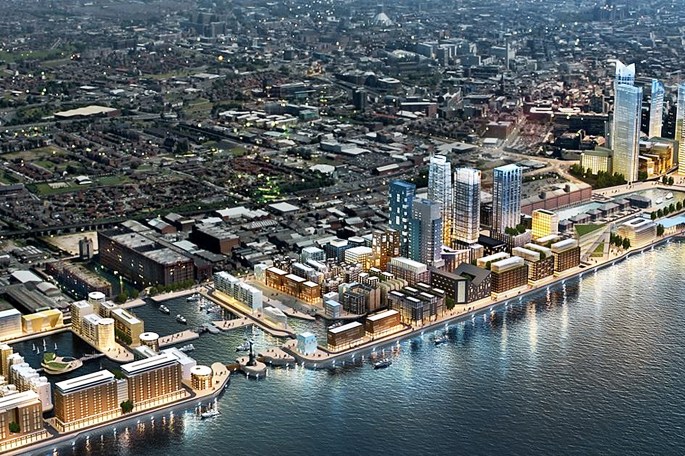From today's Times, it's only a small mention but interesting nonetheless.
Richard Morrison: Will Liverpool be the first UK site to lose its Unesco heritage status?
Richard Morrison
At a cabinet meeting this morning Liverpool city council will make history, one way or another. Either it will endorse a report recommending the reversal of a 12-year-old policy that allowed vast high-rise developments on its historic waterfront. Or it won’t. And if it’s the latter, Unesco — which warned the city last year that it was on the verge of losing its status as a world heritage site — will almost certainly carry out its threat.
That would be a shame, in both senses of the word. Liverpool would be the first of the UK’s 27 world heritage sites to lose its designation, and only the fourth in the world, after the Arabian Oryx Sanctuary in Oman, the Dresden Elbe Valley in Germany and Bagrati Cathedral in Georgia. Does that matter? Unesco doesn’t give any money to its world heritage sites, so Liverpool wouldn’t lose funding, but the impact on tourism would be painful.
Anecdotal evidence suggests that many American and Asian tourists structure their travels round Unesco’s list. Indeed, tourism chiefs in the Lake District predict a £20 million annual boost to the local economy now that the area has finally been granted world heritage site status, after 31 years of trying.
The proposed development at Liverpool WatersPEEL LAND AND PROPERTY
Liverpool’s councillors have had plenty of warnings about what would happen if they pushed ahead with insensitive redevelopments. As long ago as 2013 Unesco placed the city on its “endangered” list. That warning was itself a belated response to the rash 2006 decision by the former leader of Liverpool city council Warren Bradley to scrap building-height regulations, which he described as “ridiculous”.
So why did Liverpool persist with policies that jeopardised its world heritage status? There are two answers to this. The more general one is that the city council has always had an ambivalent attitude towards Liverpool’s fine stock of 18th and 19th-century architecture.
In 2015, for instance, 400 characterful Victorian terraced houses in the “Welsh Streets” of Toxteth were saved from council-approved demolition only by the intervention of Eric Pickles, in practically his last good deed as communities secretary. Since then many of those needlessly condemned houses have been restored as desirable homes for local families — something that could and should have happened 15 years earlier.
The more specific answer, however, is that — as in London and Manchester — Liverpool’s councillors have gone tower crazy. In 2012 they granted outline planning permission for a huge, £5 billion Merseyside development called Liverpool Waters. As originally envisaged, it would have monstrously overshadowed the docks and thus demeaned the city’s history as the “second port of the Empire”.
Perhaps, in this era of lingering post-colonial guilt, some local politicians felt that to be a good thing, but Unesco didn’t see it that way. It ruled that the size and height of Liverpool Waters would “fundamentally adversely affect” the world heritage site. Unesco is also worried by Everton Football Club’s plan to build a new stadium in Bramley-Moore Dock, which is also inside the world heritage site. It’s not hard to see why. Yes, in theory a 21st-century stadium could be designed with such scrupulous sensitivity that it complemented the brick Victorian maritime architecture around it. The trouble is that when you look at the bland glass and steel stadiums erected in the past 20 years, you can’t imagine such a thing happening.
Happily, the signs are that at today’s meeting Liverpool’s councillors will toe the Unesco line. That means endorsing a “desired state of conservation report”, drawn up in conjunction with Historic England and the government, that recommends what “corrective measures” the city’s planners must take. They include a new cap on building heights and a scaled-down version of Liverpool Waters.
It’s obvious that this is the right way forward. Or is it? Heritage guardians and anti-tower activists are certainly jubilant about Liverpool’s impending U-turn. The architect Barbara Weiss, founder of the Skyline campaign against unsightly high-rises, says the change of heart comes “not a second too early” because the redevelopments are destroying “the city’s uniquely grand and severe beauty”.
Possibly, but the reasons Liverpool’s councillors approved the schemes in the first place — the urgent need to provide thousands more homes and jobs in a city still mired in reminders of chronic economic decline — haven’t gone away. New development is still needed. What Unesco has done is remind everyone that you don’t make a city great again by trampling all over its most characterful features.




















